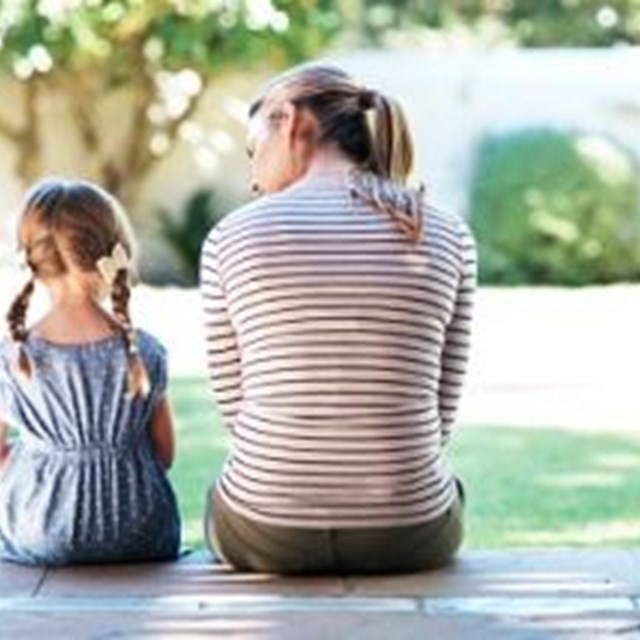
Anxiety about school shootings is on the rise, especially following the loss of 21 lives at Robb Elementary School in Uvalde, Texas, earlier this year. Constant media coverage of gun violence in American schools can make it difficult not to imagine a worst-case scenario at your child’s school, and the mental and emotional toll these horrific events take on both parents and students is immense. Parents and caregivers may wonder just how much they should discuss with their child in the wake of such tragedies. Here are a few ideas for how to talk to your child about gun school shootings based on their age:
Children Under Age 7: Preschool-aged children who are not yet in school or privy to the news should be shielded from whatever events have occurred. In order to not cause unnecessary anxiety or stress, parents and caregivers should not leave the news running at home or listen to the news on the radio in front of their very young children. There is no need to discuss the tragedy with children before kindergarten, as they will likely not be able to fully comprehend what has happened in a productive way.
Once children are school-aged, however, it may be time to bring it up for discussion. Children as young as kindergarten age may already be participating in active-shooter drills at their school, and they’re also likely to hear about what has happened from a classmate or other adult. For kindergartners through primary school-age students, ask open-ended questions and speak in simple sentences. Simplified explanations like “someone hurt people,” may be best. Be sure to ask them if they have questions and let them know it is okay to talk about it with you.
Resist the urge to overshare–focus on sharing the news and then wait until they ask questions to continue any discussion. Focus on letting them know they are safe and that grown-ups are working on fixing the problem. Even though we may feel unsure and anxious ourselves, we want to communicate safety and security to our children. On the heels of any major school shooting tragedy, remind them that any active-shooter drills (which can be anxiety-inducing for some kids) are meant to help keep them safe, and try to keep your day-to-day routines at home as normal as possible. Remember that just because they may be old enough to know what has happened, it does not mean excessive media exposure isn’t harmful. Keep the news off and save any strong emotions you may be feeling for the other adults in the household, not your child.
Children 8-12: While a lot of the same guidelines will also apply to elementary school-aged children, one of the big differences parents and caregivers can expect is the number of questions their child will have. It’s still recommended to minimize all news media as much as possible and control the conversation at home, rather than having your child’s imagination run wild. But it’s also safe to assume that some children in this age group will have their own cell phones and more unsupervised access to the internet and television. Parents and caregivers need to decide on what messages they want to communicate and get ahead of whatever their child is going to hear at school and online.
The conversations you have with your 8- to 12-year-old child following traumatic school shooting events should also focus on providing reassurance as they head back to school. We can take the opportunity to let them know that while one school shooting is too many, school shootings are actually an exceptionally rare occurrence, and the drills they practice at school are designed to help keep them safe. Another tip is for parents to try to counteract any negative images or news stories with positive and uplifting ones. Think about it as one bad picture/thought/story needing to be balanced with a reminder that there is still a lot of good in the world.
Teens: Teenagers will be able to have much more in-depth discussions about school shootings, as they are beginning to form their own moral beliefs and outlook on the world. It is still a good idea to begin the conversation by asking what they already know. Most teenagers have a cell phone and may receive notifications as a school shooting or other act of violence is underway.
Instead of one sit-down conversation, it may be more productive for parents and caregivers to continually check-in with their teen and see when they might be open for a discussion. Allow them to process what has happened and then discuss it at their own pace, when it feels right to them. Just be sure to continue to stick to the facts once it does come up. Unlike younger children, it is okay to share some of your own feelings about the situation with your teen.
Help your teenager pick credible, age-appropriate news sources and try watching the news together following traumatic events like a school shooting. Be on the lookout for information overload and subtle signs of distress, and address each of your child’s concerns if they’re willing to share. Parents and caregivers should do all they can to reassure their teenage child and provide resources for dealing with stress. Meditation apps, school counselors and time to “device-detox” or “media-detox” are all helpful ideas following a school shooting.
Finally, it can be helpful for teenagers and young adults to take social action in times of crises. If your child shows some inclination, encourage their activism and help them explore the different ways they can get involved in making a difference.
There is no easy or straightforward way to address school gun violence with our children. It’s a distressing subject for both parents and children, but it’s necessary for the long-term mental health and well-being of all family members. For more information on how to talk about school shootings with your kids, visit www.childmind.org, www.commonsensemedia.org, www.counseling.org, and www.verywellfamily.org.

